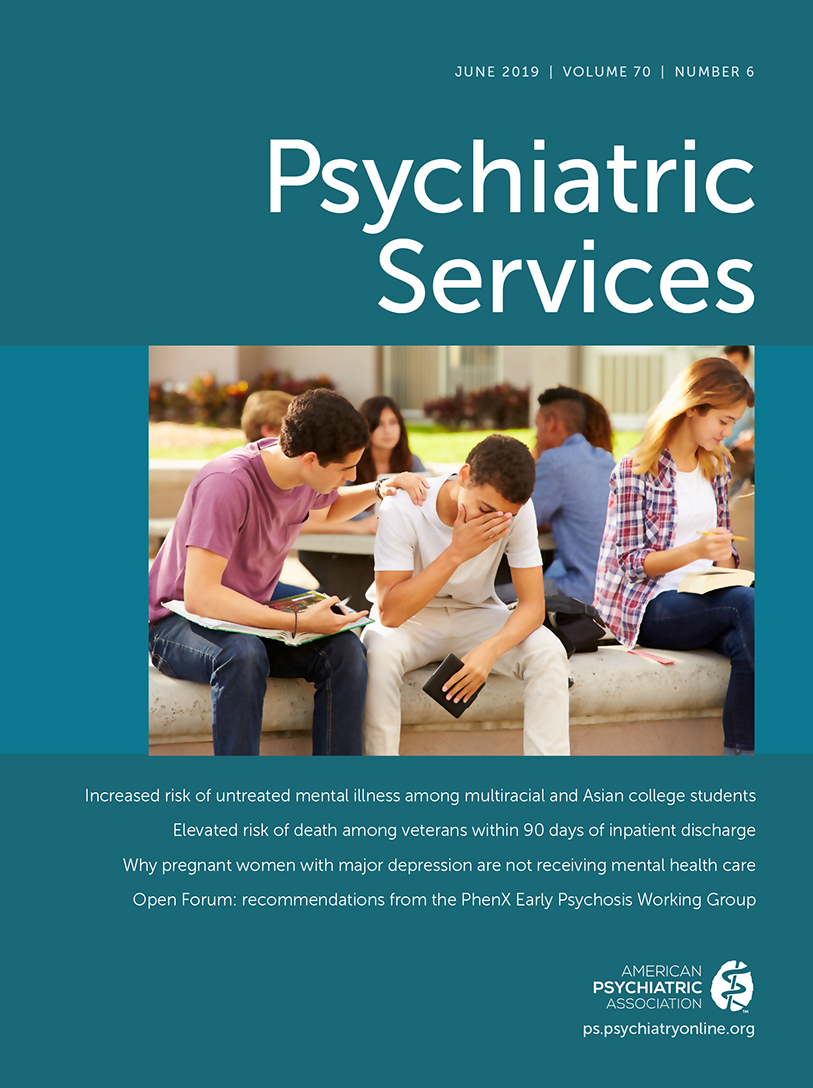Increased Rates of Mental Health Service Utilization by U.S. College Students
TO THE EDITOR: The recent article by Lipson and colleagues (1) documents increased utilization of mental health services by U.S. college students in outpatient, inpatient, and emergency settings. The authors propose that this increase may be due to a combination of increased prevalence of mental illness and decreased stigma, specifically that decreased personal stigma may contribute to increased help seeking. This important article highlights the growing demand and need for mental health services on college campuses. We have several comments about these findings.
First, the increased rate of suicide in the 15- to 24-year-old age group over this same period suggests that the increased rate of mental illness, rather than stigma, may play a larger role in students’ accessing more mental health services (2). Additional research could explore the impact of increased mental illness in the context of perceived stigma concerning service utilization.
Second, the data regarding stigma and help seeking are complicated. Although the authors cite that personal stigma, and not perceived stigma from others, is associated with treatment seeking among college students, other studies have concluded the opposite to be true (3). Specifically, other studies have shown that perceived stigma but not personal stigma was strongly related on college campuses to help-seeking behavior (4). Understanding the role of different kinds of stigma in help seeking warrants further investigation.
In addition, given that this broad study surveyed 196 college campuses across the country, the data do not account for regional variation in perceived stigma. A repeated finding has been that perceived stigma is a greater barrier to help seeking in rural areas than in urban areas, and this finding may therefore vary across U.S. campuses (5).
One possibility that was not discussed is whether increased severity of mental illness may contribute to an increase in both help seeking and suicide rate. Data we gathered from an inpatient psychiatric facility in a college town in the southeastern United States lend some credence to this notion. For persons ages 18–24, the number of unique patients admitted and total hospital admissions increased from 2007 to 2017 (see online supplement). For students specifically seen at the university student health psychiatry service over the past 5 years, the number of psychiatric hospitalizations has nearly tripled while the total student enrollment has increased by only 11.5% (see online supplement).
We agree with Lipson and colleagues that among college students, service use is rising, prevalence of psychiatric diagnoses is rising, and the suicide rate is rising. Clearly, there is a need for increased availability of high-quality mental health services on college campuses. We also agree that both increased rates of mental health problems and decreased stigma could contribute to increased service utilization. However, additional research is needed to prove any causal relationship between illness prevalence, illness severity, perceived stigma, and help seeking. Such research could shed light on the significance of each of these factors and lead to better understanding of how severity of mental illness and different kinds of stigma factor into service utilization.
1 : Increased rates of mental health service utilization by US college students: 10-year population-level trends (2007–2017). Psychiatr Serv 2019; 70:60–63Link, Google Scholar
2 Suicide Statistics. New York, American Foundation for Suicide Prevention. https://afsp.org/about-suicide/suicide-statistics. Accessed Nov 12, 2018Google Scholar
3 : How are perceived stigma, self-stigma, and self-reliance related to treatment-seeking? A three-path model. Psychiatr Rehabil J 2015; 38:109–116. doi:
4 : The relationship of perceived campus culture to mental health help-seeking intentions. J Couns Psychol 2016; 63:677–684Crossref, Medline, Google Scholar
5 : Perceived barriers and facilitators to mental health help-seeking in young people: a systematic review. BMC Psychiatry 2010; 10:113Crossref, Medline, Google Scholar



